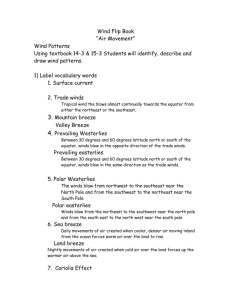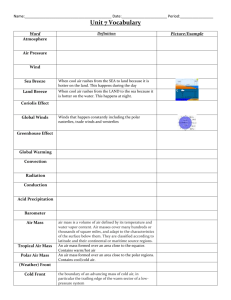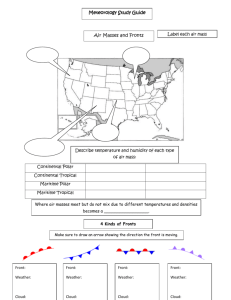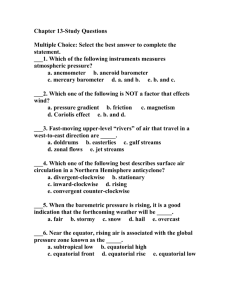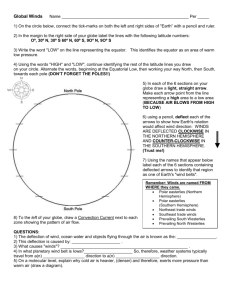Wind
advertisement
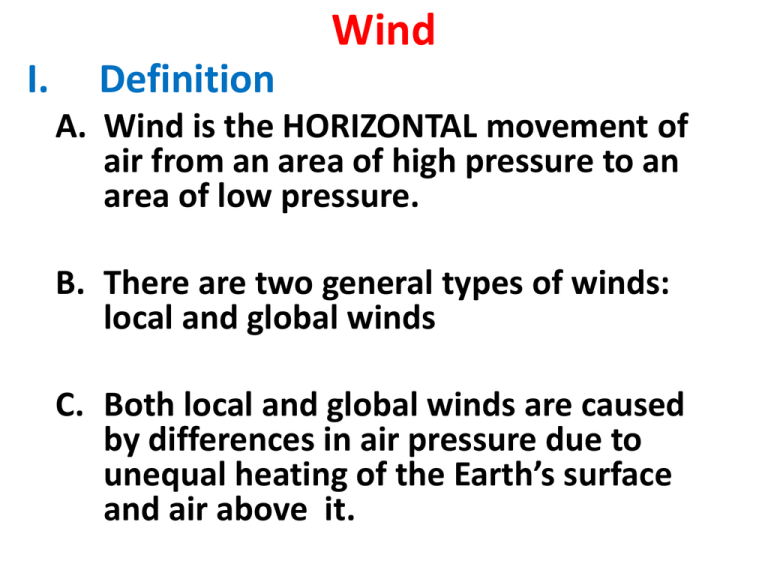
Wind I. Definition A. Wind is the HORIZONTAL movement of air from an area of high pressure to an area of low pressure. B. There are two general types of winds: local and global winds C. Both local and global winds are caused by differences in air pressure due to unequal heating of the Earth’s surface and air above it. Wind II. Local Winds A. Wind movement over short distances from any direction. B. Types of local winds: 1. Sea Breeze: Flow of air from the sea to the land due to the land absorbing more heat than the water during the day. Wind Daytime • • • • • land absorbs the suns energy and releases it water absorbs the suns energy and holds it hot air rises over the land cooled air sinks over the water Comes back to land as a SEA BREEZE. Wind 2. Land Breeze: The flow of air from land to sea due to the cooler air over the land moving to replace the rising air over the water at night. Night Time • • • • water releases heat gathered during the day hot air rises over the water cooled air sinks over the land Moves out over the water as a LAND BREEZE. Wind 3. Monsoon: Seasonal wind – a major sea or land breeze. C. All winds are named for the direction FROM which they come! Example: A wind coming from the northwest blows toward the southeast, but is named a northwest wind! II. Measuring Local Wind A. Wind speed is measured with an anemometer. B. Wind direction is measured with a weather/wind vane. Wind III. Global Winds A. Unequal heating of the earth’s surface forms global wind patterns. B. Travel over large areas of the earth and only come from one direction. C. Due to the earth’s rotation, the global winds are curved and shift in relation to the earth’s surface. D. CORIOLIS EFFECT: The way the earth’s rotation makes winds curve. Winds curve in the opposite direction north and south of the equator. Wind Wind patterns as if the earth were standing still (No Coriolis Effect). Wind E. Types of Global Winds: 1. Doldrums – Located at the equator, these winds are calm with little horizontal movement 2. Horse latitudes - 300 north and south of the equator 3. Trade winds – global winds between 300 north and south and the equator; used to be used by sailors long ago to move their ships carrying cargo (trade) 4. Prevailing Westerlies – global wind that affects the United States and causes our weather to move from west to east. 5. Polar Easterlies – Global winds located at the north and south poles. Wind Same wind patterns as before, now they have direction to them. Polar easterilies **Prevailing Westerlies North Trade Doldrums South Trade Westerlies Polar Easterlies We (United States) are in the Prevailing Westerlies Wind Belt

